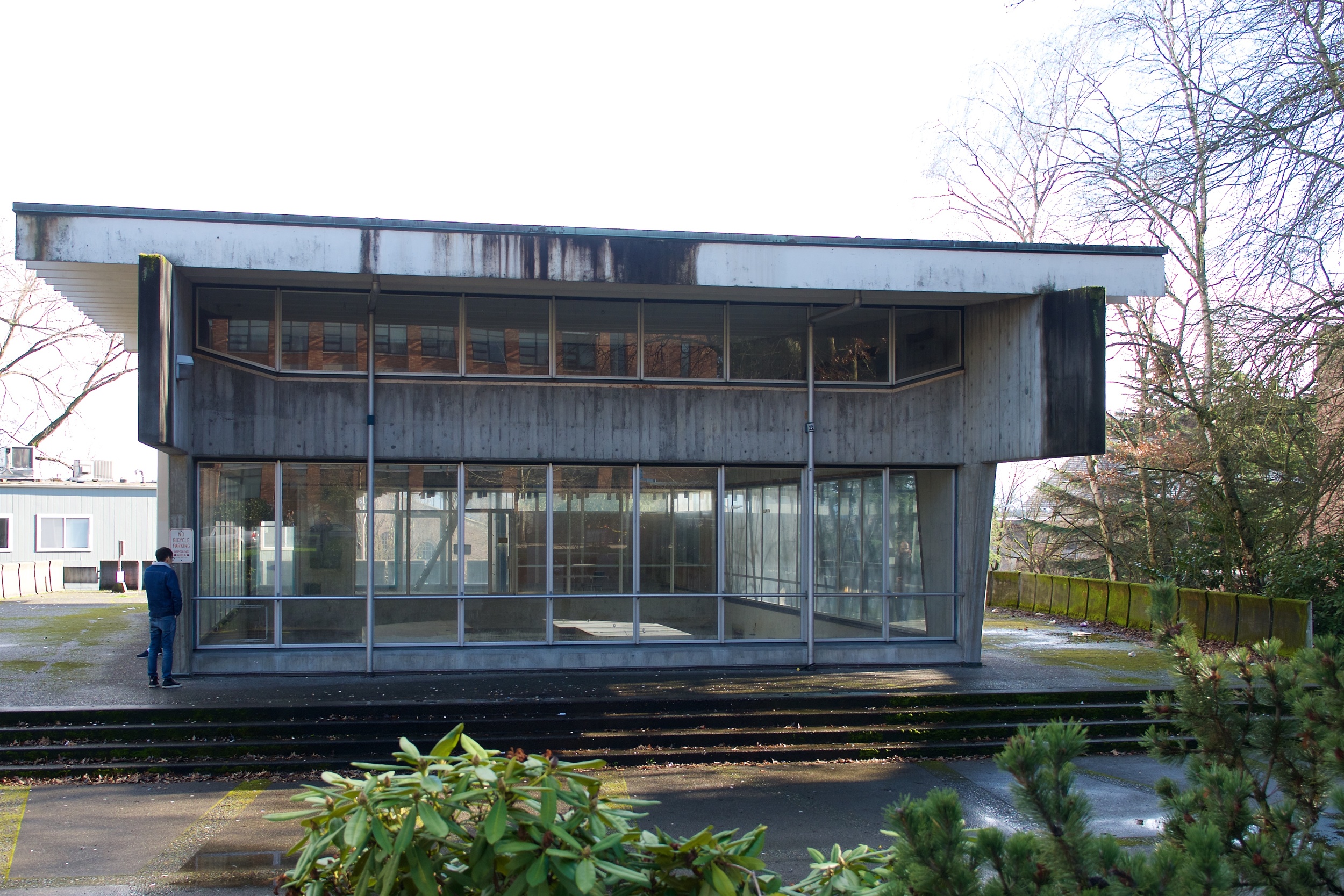More Hall Annex
I saw an article in the Seattle Times about the UW regents voting to demolish More Hall Annex. This decision is controversial, and the building itself is far from usual.
Architecture
The More Hall Annex stands out from the buildings around it since it is made of concrete and glass, rather than brick or stone. Brutalist architecture (or Brutalism) can be seen here and there; in addition to this building, I've also seen one in Indianapolis (the US Social Security Administration building) and one at UC Berkeley (Wurster Hall, one of several on the campus). The Salk Institute would also fall in the Brutalist category, but they don't seem to advertise the fact (probably because of the name).
While many Brutalism buildings are relatively square, you also see a lot of wild shapes, such as the UCSD Geisel Library or Toronto's Robarts Library. Concrete gave architects the freedom to explore new designs since the material gave them a lot of freedom. Today, it's much more common to see buildings of odd shapes made of steel, such as those by Frank Gehry, with the Experience Music Project and Walt Disney Concert Hall being two prime examples.
The podcast 99% Invisible had a great episode on Brutalism, with more history about the style.
As far as buildings go, More Hall Annex is pretty small, and as you approach it from the central campus, you see a wide swath of glass skirting three sides, with what looks at first like just empty space, not even a floor. As you get closer, though, you start to see the remains of the building's use.
Function
More Hall Annex used to be known as the Nuclear Reactor Building, and that's exactly what was in it. When you first look in the main area, along the back wall you see what looks like a former control room, and below, you see two big concrete blocks; the nuclear reactor sat between them.
It may seem alarming to have had a nuclear reactor on campus, especially one not encased in thick walls; the reactor was in full view of passers-by through windows. It was decided that the reactor itself offered enough shielding for the low power levels being used, and having it below ground level would allow the earth around the building to act as shielding.
The decision to have the reactor situated as it was came into play in 1972, when there was a leak, with 42 grams of plutonium dust escaping from a failed capsule. Of the people with potential exposure, one student registered excessive levels and was treated for minor radiation contamination. The contaminated equipment which could not be cleaned was sent to Hanford to be buried.
The reactor was operational for almost thirty years, starting in 1961. Its use declined since interest in nuclear engineering waned after the Three Mile Island incident, among other factors. The reactor stayed in position but idle, until after 9/11, when it was decided to fully decommission it. The name of the building was also changed to More Hall Annex, but since building codes never changed, it kept the code of NRB.
Will it stay?
While the regents voted to demolish the building to make way for a new Computer Science building, that conflicts with More Hall Annex being on the Washington Heritage Register. However, the University is asserting that since it is a state institute of higher learning, it's not subject to the city of Seattle's Landmark Preservation Ordinance. It's not clear to me, however, if there's a state preservation ordinance.
Not many people on campus pay attention to More Hall Annex; it seems to be a popular spot for smoking, even though you're not supposed to smoke right next to the building. Its architecture is unique among other campus buildings, and it would be nice for it to stay, but space on campus is very tight; in addition to the building itself, there's quite a bit of open area between it and the existing Computer Science building.
If you're interested in the building or Nuclear Engineering on campus, the HistoryLink entry is pretty interesting.









